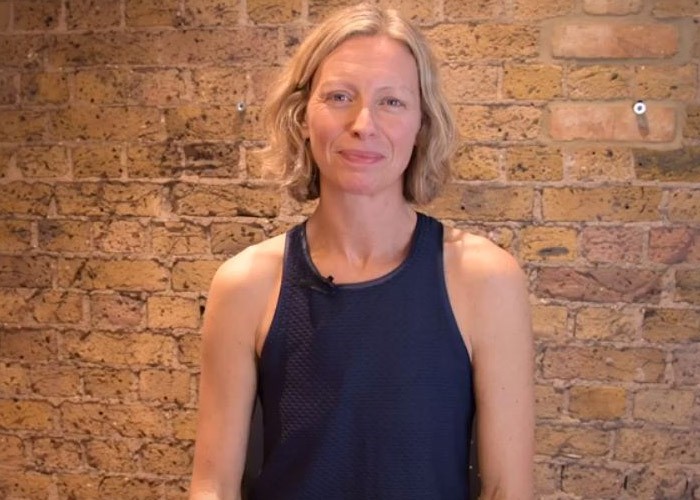It can be difficult to start or restart exercise after treatment. Lizzy Davis, who works with women on our Moving Forward course, explains how to get started.
It can be difficult to start or restart exercise after treatment, but beginning slowly is key. Exercise expert Lizzy Davis, who works with women on our Moving Forward course, explains how to get started.

How can physical activity help me after treatment?
Exercise can prepare your body for physically demanding breast cancer treatments and can help in the recovery period. It can also help you to reconnect with the ‘old you’ or adjust to the ‘new me’. Exercise has been proven to positively impact our life span and quality of life.
You might begin with some gentle stretching and focused breathing exercises to help you relieve any unwanted stress and tension.
Re-building muscle mass after treatment can help improve your balance, bone density and your overall daily functioning. It can also bring about a sense of achievement.
It’s important to approach physical activity with care
Start exercising gently by:
- Adjusting your physical activity according to ongoing side effects or limitations.
- Being aware of your physical body, especially if your balance is poor or if you have restricted movement.
- Understanding your exercise plan and how it relates to your unique needs.
- Pacing, prioritising, and planning.
- Talking to your health care team before you begin.
How should I feel when I’m exercising?
This will vary from person to person. If you haven’t exercised for some time, take it slowly. Build up and see how you feel each day.
You might like to keep a diary to log and track your efforts and note changes to how you feel. You might feel pain, discomfort, stiffness, fatigue or weakness to begin with.
What if I feel pain?
It’s important to stop an activity if you experience unusual pain. Knowing your limits can help you to navigate pain and check in with yourself.
If you’re feeling pain, you might ask yourself:
- What kind of pain am I feeling? Is it muscular? Scar tissue-related? Joint-related?
- Have I warmed up enough and moved all my joints?
- Am I breathing properly?
- Can I gently move through it? Or, should I listen to it and act on it?
Can I get all the exercise I need from the comfort of my own home?
Yes, absolutely. With growing access to apps, YouTube videos, books, DVDs and other websites, there is plenty of exercise guidance at your fingertips.
Be smart and safe by doing physical activities that are suitable for you and be sure to speak to your healthcare team before getting started. You can buy home-based equipment, or simply use your body weight and surfaces around your home such as walls, floors, stable chairs and stairs.
Exercise One: Deep breathing
Exercise Two: Neck and shoulders
Exercise Three: Active warm up
Exercise Four: Sit to stand
Exercise Five: Arms and upper body
Exercise Six: Chest, back and stomach
Exercise Seven: Posture muscles
Exercise Eight: Balance
Top tips for getting started and staying motivated
- Start with short walks, gentle stretching, or deep breathing exercises
- Find a buddy to exercise with
- Use a walking app or pedometer to monitor your daily step count
- Sets realistic and achievable goals (short term to begin with)
- Work out what barriers you might have before beginning an exercise programme (such as family or work commitments)
- Choose something you enjoy and that works with your lifestyle
- Select a time in the day when your energy levels are higher
- Know that your efforts come with physical and emotional rewards
Find more exercise videos, plus other hints and tips on adjusting to life after breast cancer in BECCA, our free app: